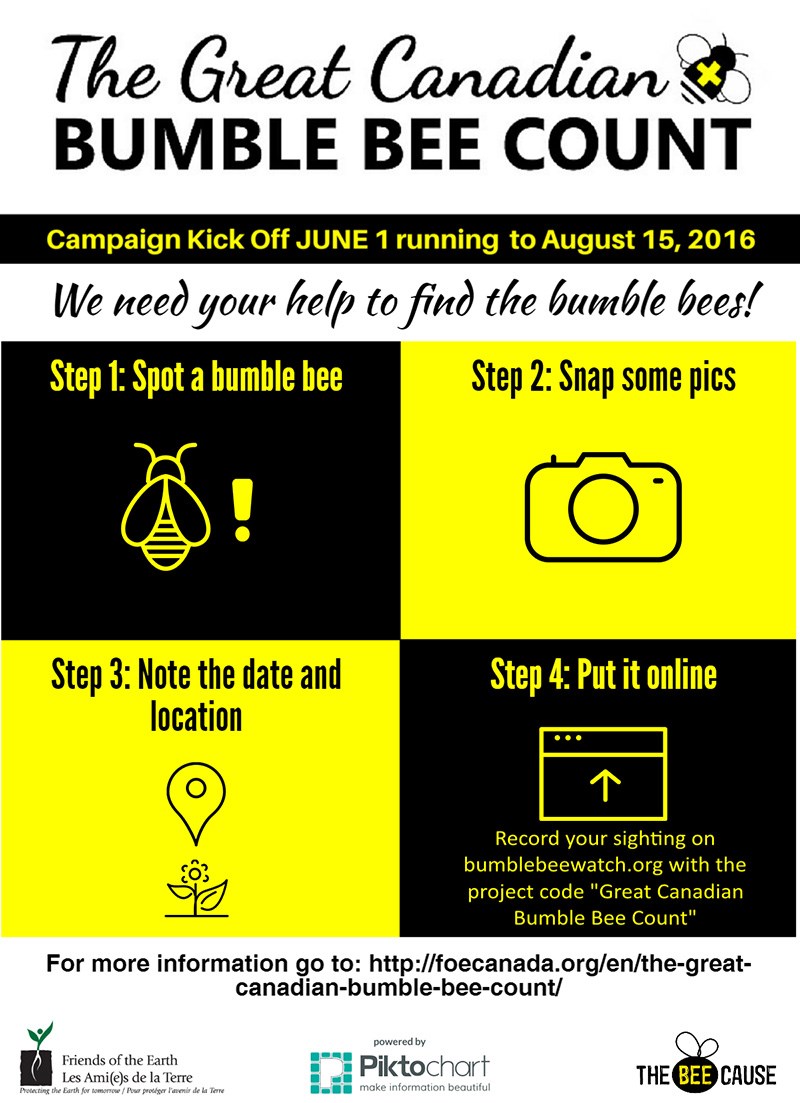"Bee" part of a nation-wide research project this summer just by snapping a photo of the busy bees you see and sharing them online.
The Great Canadian Bumble Bee Count is a cross-country citizen science project aimed at collecting data about the distribution of native bees. The public is being asked to take a photo of bees in their garden, park or campsite and upload it to bumblebeewatch.org, where a team of researchers will verify their type among the 40 or so native species of pollinators.
"In recent years we've seen not only quite a large decline in the number of bees, but we're also seeing a shift in where they're moving," said Frances Fyfe, a research assistant with Friends of the Earth Canada, an arm of Friends of the Earth International.
"In B.C. we saw somebody uploaded a photo to bumblebeewatch.org and it was a…bee commonly found in Ontario but it's never been seen in B.C. before. That's interesting and brought up some questions — how did it get there?"
Fyfe said when people post a photo on the website it will take them through a short series of steps to try and identify it. Researchers, many of them graduate students at universities across Canada, then study each post and verify the type of bee.
"It's less of a bumble bee count or looking at the numbers," Fyfe said. "What's really important is where the bees are and what type of bees they are."
Bumble bees are important pollinators for food crops and wildflowers but several of the Canada's 40-plus species are dramatically declining. It's hoped the project will boost the amount of bee-specific monitoring in Canada.
Fyfe said organizers are spending the first year of the project drumming up awareness and getting as many people to participate as possible. They hope to publish a report with the findings and, as the project grows over the coming years, using it to compare year-to-year data.
[email protected]
@spayneTC



